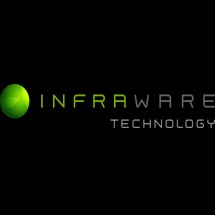| 일 | 월 | 화 | 수 | 목 | 금 | 토 |
|---|---|---|---|---|---|---|
| 1 | 2 | 3 | 4 | 5 | ||
| 6 | 7 | 8 | 9 | 10 | 11 | 12 |
| 13 | 14 | 15 | 16 | 17 | 18 | 19 |
| 20 | 21 | 22 | 23 | 24 | 25 | 26 |
| 27 | 28 | 29 | 30 |
- istqb 기출문제
- 테스팅
- 테스트 외주
- 실라버스
- Polaris Office
- App QA
- qa테스트
- QA
- 모바일앱 QA
- 자격증
- Test
- qa 자격증
- istqb dump
- TestCase
- ISTQB
- istqb fl
- mobile QA
- 폴라리스오피스
- 테스트 아웃소싱
- Office test
- testing
- FL
- 검증
- 테스트케이스
- 외주 테스트
- ctfl
- QA자격증
- 게임 qa
- qa 아웃소싱
- 테스트
- Today
- Total
QA Outsourcing & Consulting
[ISTQB] FL 3 <Functional testing, Review> 본문
Q. Where may functional testing be performed?
A. At system and acceptance testing levels only.
B. At all test levels.
C. At all levels above integration testing.
D. At the acceptance testing level only.
<해설>
실라버스 2.3.1 기능 테스팅에 대한 기술에서 정답을 찾을 수 있는 문제입니다.
테스트 설계 기법 중 블랙박스와 화이트박스에 대한 것으로,
블랙박스에는 어떠한 것들이 있고, 화이트박스에는 어떠한 것들이 있는지에 대한 문제로,
각 설계기법의 특징을 명확히 알고 있는지는 물론, 이것이 블랙인지 화이트인지 구분이 가능한지를 묻는 문제입니다.
실라버스 2.3.1에 기술되어 있듯이 기능 테스트는 모든 테스트 레벨에서 수행될 수 있습니다.
A : B
Q. What is the MAIN objective when reviewing a software deliverable?
A. To identify potential application failures by use of a test specification.
B. To identify defects in any software work product.
C. To identify spelling mistakes in a requirements specification.
D. To identify standards inconsistencies in the code.
<해설>
실라버스 3.1 정적 기법과 테스트 프로세스의 설명인
A review could be done entirely as a manual activity, but there is also tool support.
The main manual activity is to examine a work product and make comments about it.
Any software work product can be reviewed, including requirements specifications,
design specifications, code, test plans, test specifications, test cases, test scripts, user guides or web pages.
와 같이 모든 개발 산출물은 리뷰의 대상이 될 수 있습니다.
이 외에도 리뷰의 이점(조기 결함 발견/수정으로 인한 테스트 비용 감소 등)에 대해서도 알고 있어야 합니다.
또한, 리뷰, 정적 분석, 동적 테스팅 모두 목적은 결함 발견이며, 정적 분석은 장애의 원인인 결함(defects), 동적 테스팅은 faulures 그 자체 발견에 효율적이며, 리뷰는 표준 위반, 요구사항 결함, 디자인 결함 등 발견에 효율적입니다.
'IT Trend > ISTQB FL' 카테고리의 다른 글
| [ISTQB] FL 6 <Exit criteria, Non-functional system testing> (0) | 2019.01.10 |
|---|---|
| [ISTQB] FL 5 <Regression testing, IEEE 829> (0) | 2019.01.08 |
| [ISTQB] FL 4 <Debugging, Error, Fault, Failure, Defect> (0) | 2019.01.02 |
| [ISTQB] FL 2 <Test planning, Review> (0) | 2018.12.28 |
| [ISTQB] FL 1 <State transition table, Configuration management> (0) | 2018.12.26 |





